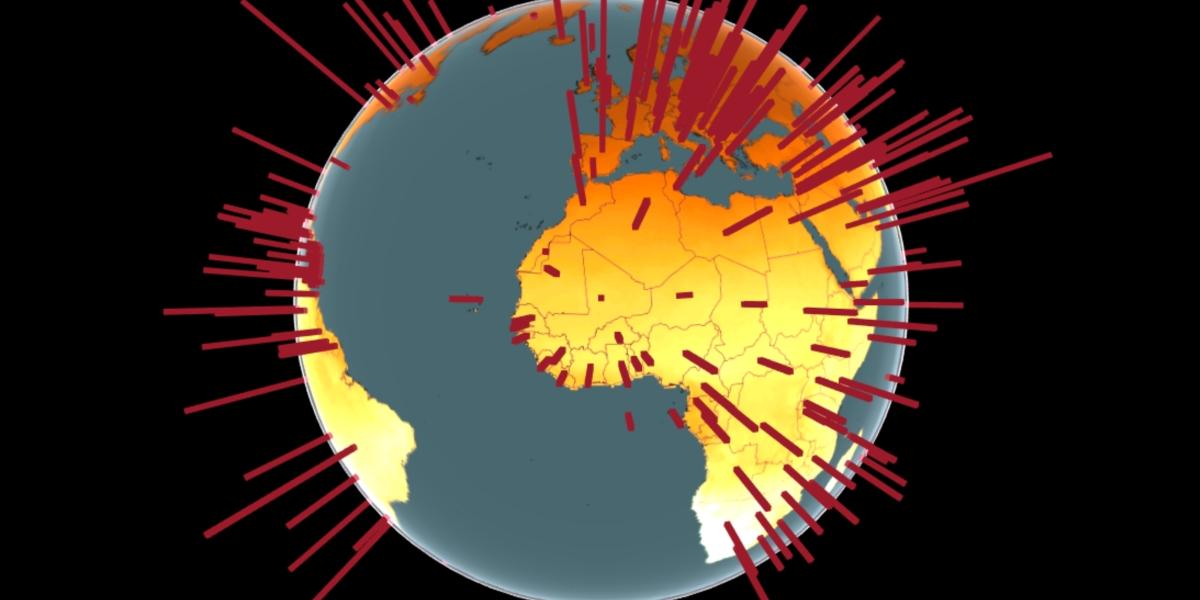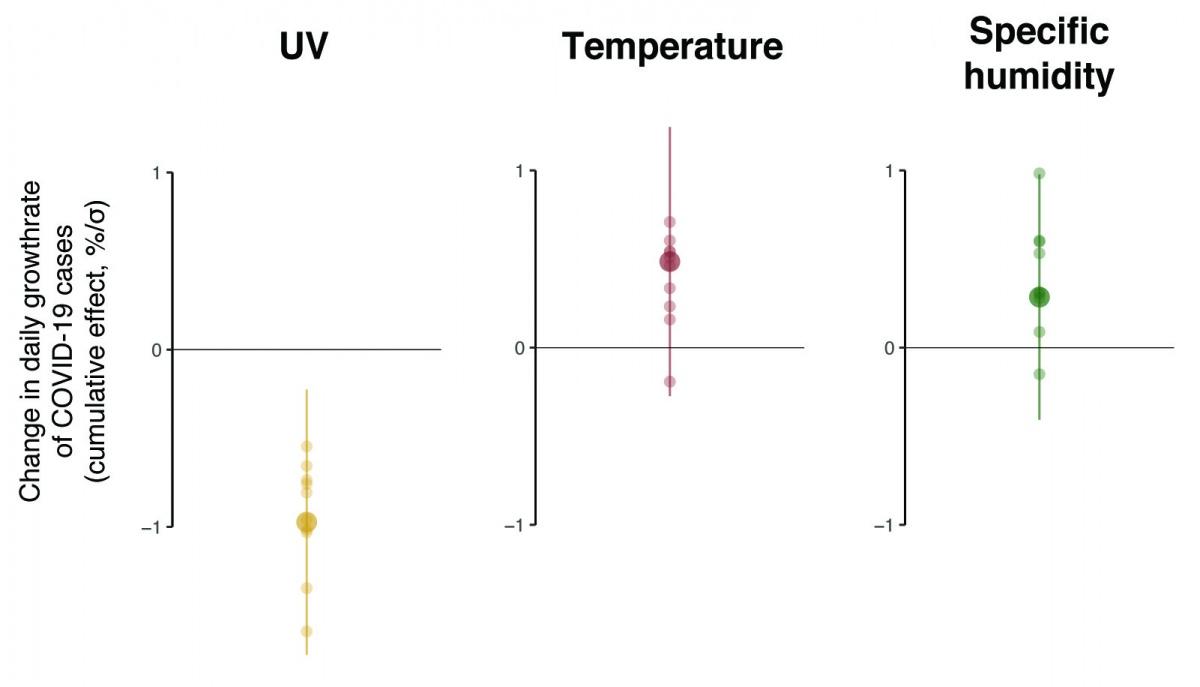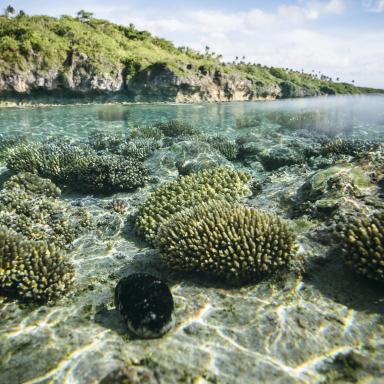
As COVID-19 continues to threaten lives and livelihoods across the globe, researchers and policymakers have wrestled with the question of the virus’ seasonality. Will the pandemic continue to worsen in the Northern Hemisphere through the course of the winter? Will spring and summer bring reprieve for the billions who will remain unvaccinated? How does the effect of seasonality on case counts compare to the effectiveness of the costly public health measures, such as stay-at-home orders, school closures and travel restrictions, that many governments are imposing?
There are a few good reasons to think that SARS-CoV-2, the virus that causes the COVID-19 disease, may be influenced by environmental conditions, such as temperature, humidity, and sunlight, which vary with the seasons. H3N2, 2009 H1N1, and other strands of influenza have exhibited sensitivity to temperature and humidity, and we’ve seen that related coronaviruses are inactivated by ultraviolet radiation (UV). Recent laboratory studies found that SARS-CoV-2 rapidly inactivates under UV exposure that mimics sunlight.
However, it’s not clear whether these possible mechanisms lead to meaningful influences on COVID-19 transmission at the population scale. Moreover, many seasonal influences simply can’t be tested in the lab -- such as the impact of weather conditions on people’s behavior, particularly their proclivity to gather indoors where transmission tends to be higher.
To help fill this knowledge gap, we assembled a database of COVID-19 cases and local weather conditions across 3,000 regions and 170 countries between January 1, 2020 and April 10, 2020. We combined these spatially rich data with a statistical approach developed to study the causal impact of environmental conditions from the climate change economics literature to quantify what, if any, impact local environmental conditions have on the spread of COVID-19.

Figure 1: The cumulative effect of ultraviolet radiation, temperature and specific humidity on the growth rate of confirmed COVID-19 cases over 2.5 weeks.
In our recent paper published in the Proceedings of the National Academy of Sciences, we find that ultraviolet light reduces the spread of COVID-19. The higher the UV, the lower the growth of the disease in a population (as measured by confirmed COVID-19 cases) over the following two and a half weeks. A standard deviation increase in daily UV lowers the daily growth rate in COVID-19 cases by 1 percentage point over the subsequent 2.5 weeks, relative to an average in-sample growth rate of 13.2 percent (Figure 1). On average, this amounts to slowing the doubling time of confirmed cases from 5.2 to 5.7 days.
The delay we observe in the data between UV exposure and reduction in COVID-19 growth rates matches previous estimates of how long it takes for symptoms to develop (the “incubation period”), people to get tested, and cases to ultimately be reported in publicly available databases. We also investigated the impact of temperature and humidity, but found these effects to be relatively small and statistically noisy.
So what does the effect of UV on the transmission of COVID-19 mean for the seasonality of the disease? We combine the estimates shown in Figure 1 with average seasonal variation in UV (Figure 2A) to estimate the role of UV in driving seasonal changes in COVID-19. We find that seasonal changes in UV between summer (June) and winter (December) led to a 7.8 percentage point increase in the COVID-19 growth rate in the northern latitudes (north of the Tropic of Cancer), which is about a 50% increase over the average growth rate in our sample. We find an inverted pattern in southern latitudes (south of the Tropic of Capricorn), where people are currently experiencing summer highs in UV exposure. The tropics (between the Tropics of Cancer and Capricorn) experiences minimal changes in UV throughout the year, leading to small effects on COVID-19.

Figure 2: Seasonality in COVID-19 transmission driven by seasonality in UV exposure. Panel A shows average daily UV radiation in Northern (>23N) latitudes and Southern (<-23S) latitudes (averaged over 2015-2019). Panel B shows the simulated effect of seasonal changes in UV on the COVID-19 growth rate from June to December.
While we did detect a statistically significant UV effect, the overall sign of seasonality in COVID-19 remains highly uncertain, due to the statistically noisy effects of temperature and humidity. We hope that the increasing quantity and quality of data on COVID-19 will enable future work to clearly determine whether or not these other environmental conditions influence overall seasonality of the disease.
Importantly, we find that the seasonal influence of UV on reducing COVID-19 transmission is small relative to that of social distancing policies such as stay-at-home orders, school closures, and travel restrictions. This suggests that summertime UV exposure alone is unlikely to stop the spread of the virus without the implementation of strong social distancing policies, as we saw in the U.S. during June-August and currently see in Brazil. Regardless of the weather, social distancing measures are necessary to substantially slow the spread of COVID-19.




